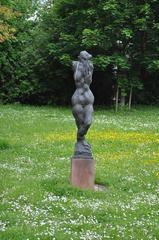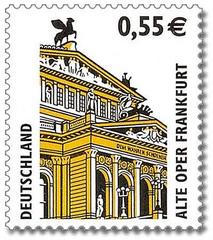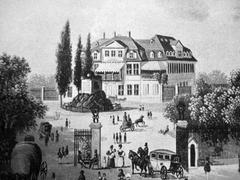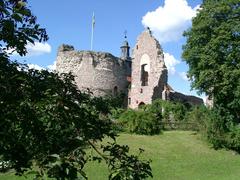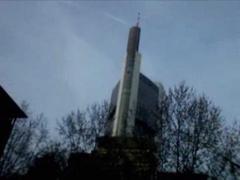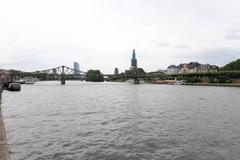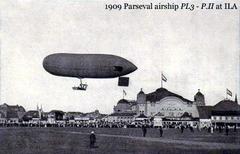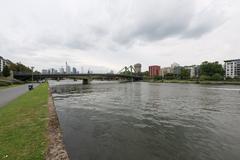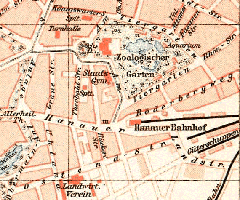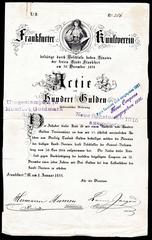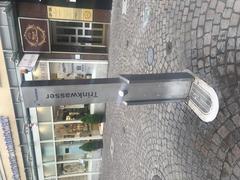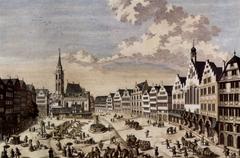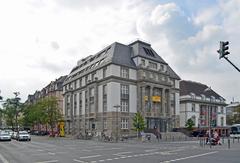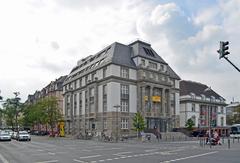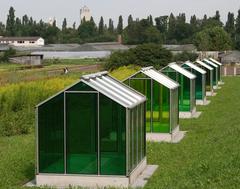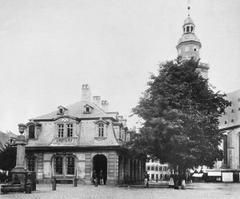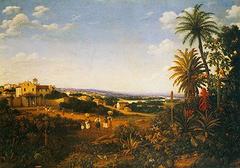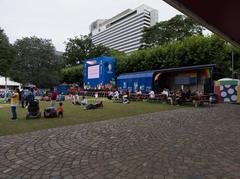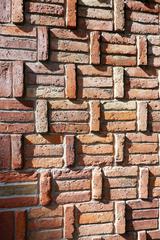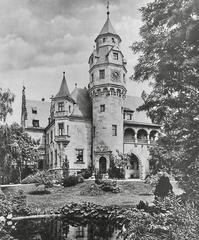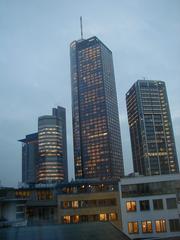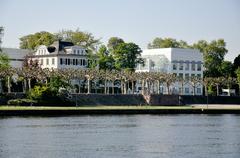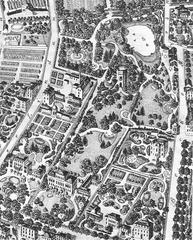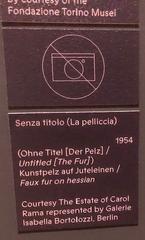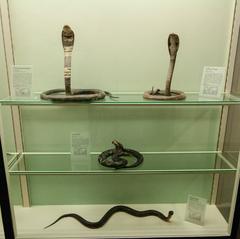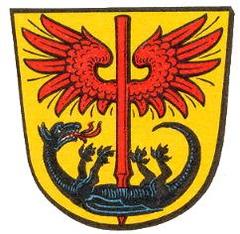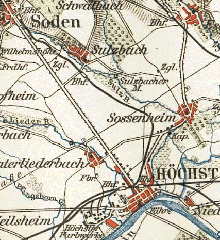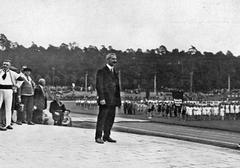Visiting Schwanheimer Düne: Hours, Tickets, and Tips
Date: 23/07/2024
Introduction
Nestled in the Schwanheim district of Frankfurt am Main, Germany, Schwanheimer Düne is a mesmerizing natural landmark that offers a unique confluence of history, ecology, and culture. This inland dune, formed around 10,000 years ago during the last Ice Age, is a rare geological phenomenon in Europe. Its formation is attributed to the accumulation of wind-blown sand and silt from the nearby Main River, creating its distinctive landscape (Frankfurt Tourism). Over centuries, Schwanheimer Düne has served various purposes, from Roman trade routes to medieval agriculture, and now stands as a protected natural monument. Designated as a nature reserve in 1984, it is home to specialized flora and fauna that thrive in its unique sandy soil. Besides its ecological significance, the dune is a beloved recreational area for locals and tourists, offering opportunities for hiking, birdwatching, and nature study. The Schwanheimer Düne is not just a destination but a testament to the diligent conservation efforts that have preserved its rich biodiversity and cultural heritage. This comprehensive guide aims to provide an in-depth exploration of the Schwanheimer Düne, covering its history, ecological importance, visitor information, and future prospects.
Table of Contents
- Introduction
- History of Schwanheimer Düne
- Conservation Efforts
- Ecological Importance
- Cultural Significance
- Visitor Information
- Modern-Day Challenges
- Future Prospects
- Conclusion
- FAQ
History of Schwanheimer Düne
Formation and Geological Significance
The Schwanheimer Düne is a unique inland dune formed approximately 10,000 years ago during the last Ice Age. The dune’s formation is attributed to the accumulation of sand and silt carried by the wind from the nearby Main River. Over millennia, these sediments were deposited and shaped into the dune we see today. The Schwanheimer Düne is one of the few remaining inland dunes in Europe, making it a site of significant geological interest (Frankfurt Tourism).
Historical Utilization
Throughout history, the Schwanheimer Düne has served various purposes. During the Roman era, the area was part of the extensive network of trade routes that crisscrossed the region. The sandy terrain provided a relatively stable and dry path for traders and their caravans. Archaeological evidence suggests that the Romans may have used the dune as a strategic lookout point due to its elevated position.
In the Middle Ages, the dune and its surrounding areas were utilized for agricultural purposes. The sandy soil, while not ideal for most crops, was suitable for certain types of vegetation, including grapevines. Historical records indicate that the local population engaged in viticulture, taking advantage of the dune’s unique microclimate.
Conservation Efforts
The Schwanheimer Düne has been the focus of conservation efforts since the early 20th century. In 1937, the dune was designated as a protected natural monument, recognizing its ecological and geological importance. This designation marked the beginning of concerted efforts to preserve the dune’s unique landscape and biodiversity.
In the post-World War II era, urban expansion posed a significant threat to the Schwanheimer Düne. The rapid growth of Frankfurt am Main led to increased pressure on natural areas, including the dune. However, local conservationists and environmental organizations successfully lobbied for stricter protection measures. In 1984, the Schwanheimer Düne was incorporated into the larger Schwanheimer Wald nature reserve, further safeguarding its future (Schwanheimer Wald).
Ecological Importance
The Schwanheimer Düne is home to a diverse range of flora and fauna, some of which are rare or endangered. The dune’s unique sandy soil supports specialized plant species, including the sand sedge (Carex arenaria) and the sand thyme (Thymus serpyllum). These plants have adapted to the harsh, nutrient-poor conditions of the dune environment.
The dune also provides habitat for various animal species. Notably, it is a breeding ground for the European nightjar (Caprimulgus europaeus), a nocturnal bird that relies on the open, sandy areas for nesting. Additionally, the dune is home to several species of reptiles, including the sand lizard (Lacerta agilis) and the smooth snake (Coronella austriaca).
Cultural Significance
The Schwanheimer Düne holds cultural significance for the local community. It is a popular recreational area, offering opportunities for hiking, birdwatching, and nature study. The dune’s unique landscape and biodiversity attract visitors from across the region, contributing to local tourism.
Local folklore and traditions also highlight the dune’s cultural importance. For example, the annual “Dune Festival” celebrates the natural beauty and ecological significance of the Schwanheimer Düne. This event features guided tours, educational workshops, and cultural performances, fostering a deeper appreciation for the dune among residents and visitors alike.
Visitor Information
Visiting Hours and Tickets
The Schwanheimer Düne is open to visitors year-round. There is no admission fee, making it an accessible destination for everyone. However, visitors are encouraged to check the official Schwanheim district website for any updates on visiting hours or special events.
Travel Tips
- Getting There: The Schwanheimer Düne is easily accessible by public transportation. Visitors can take the tram or bus to the Schwanheim district and follow the signs to the dune.
- Best Time to Visit: Spring and autumn are ideal times to visit, as the weather is mild and the flora is in full bloom. Early mornings or late afternoons are recommended for a peaceful experience and better wildlife sightings.
- What to Bring: Wear comfortable walking shoes, bring a water bottle, and don’t forget your camera to capture the stunning landscapes.
Nearby Attractions
Visitors can explore other attractions in the Schwanheim district and Frankfurt am Main, such as the Schwanheimer Wald nature reserve, the historic old town of Frankfurt, and the River Main promenade.
Modern-Day Challenges
Despite its protected status, the Schwanheimer Düne faces ongoing challenges. Climate change poses a significant threat to the dune’s delicate ecosystem. Rising temperatures and changing precipitation patterns can alter the dune’s vegetation and soil composition, potentially disrupting the habitat of its specialized plant and animal species.
Human activities also continue to impact the dune. Recreational use, while beneficial for public awareness and appreciation, can lead to soil erosion and habitat disturbance. Conservationists emphasize the importance of sustainable tourism practices to minimize these impacts. Efforts are underway to implement measures such as designated walking paths and informational signage to guide visitors and protect sensitive areas (Frankfurt Environmental Department).
Future Prospects
Looking ahead, the future of the Schwanheimer Düne depends on continued conservation efforts and public engagement. Ongoing research and monitoring are essential to understanding the dune’s ecological dynamics and addressing emerging threats. Collaborative initiatives involving local authorities, environmental organizations, and the community are crucial for the dune’s long-term preservation.
Educational programs and outreach activities play a vital role in fostering a sense of stewardship among the public. By raising awareness about the Schwanheimer Düne’s unique history and ecological importance, these efforts can inspire collective action to protect this natural treasure for future generations.
Conclusion
In summary, the Schwanheimer Düne is a site of immense historical, ecological, and cultural significance. Its preservation is a testament to the dedication of conservationists and the local community. As we navigate the challenges of the 21st century, the Schwanheimer Düne stands as a reminder of the importance of protecting our natural heritage.
FAQ
What are the visiting hours for Schwanheimer Düne? The Schwanheimer Düne is open year-round. Check the official Schwanheim district website for any updates on visiting hours.
Are there any admission fees? No, there is no admission fee to visit the Schwanheimer Düne.
What is the best time to visit Schwanheimer Düne? Spring and autumn are ideal times to visit due to mild weather and blooming flora. Early mornings or late afternoons are recommended for a peaceful experience.
How can I get to Schwanheimer Düne? The dune is easily accessible by public transportation. Take the tram or bus to the Schwanheim district and follow the signs to the dune.
Call to Action
Explore the Schwanheimer Düne and immerse yourself in its rich history and natural beauty. Don’t forget to check out other related posts on our site for more exciting destinations and follow us on social media for updates and travel tips.
